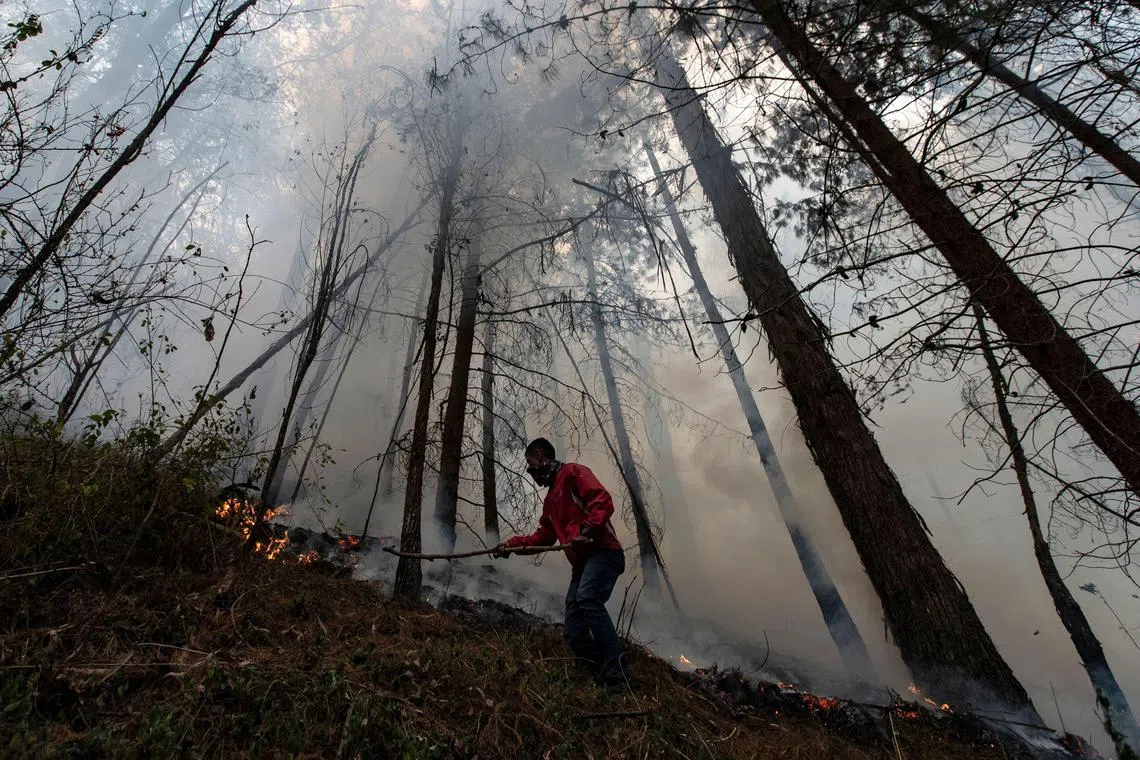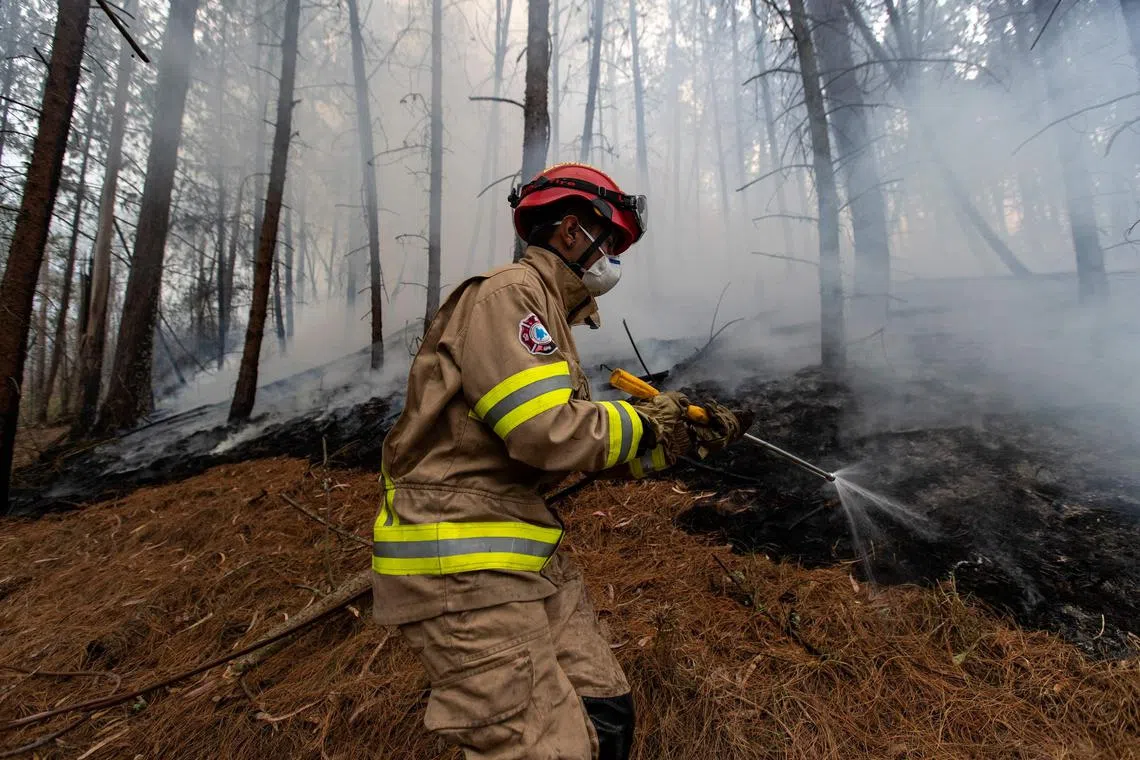UN biodiversity summit in Colombia aims to turn words into action
Sign up now: Get ST's newsletters delivered to your inbox

A man combating a fire on burned vegetation during a forest fire in Bojaca, Colombia, on Sept 20.
PHOTO: AFP
Follow topic:
PARIS - Two years after a landmark UN-brokered deal to protect nature from a massive wave of destruction, delegates will gather at a new UN conference, called COP16, in Colombia in late October to assess their progress.
Representatives from nearly 200 countries are expected at the Oct 21 to Nov 1 COP16 biodiversity conference in the city of Cali.
The last Conference of the Parties, or COP, dedicated to biodiversity in Montreal in 2022 ended with a breakthrough agreement to protect 30 per cent of the planet by 2030 from pollution, degradation and the climate crisis.
COP16 will assess the progress made and examine whether rich countries are making good on their promises to stump up US$30 billion (S$38.8 billion) a year to help the developing world save its ecosystems.
The Cali conference, which takes place two weeks before the COP29 climate change gathering in Azerbaijan’s capital Baku, will be “an implementation and financing COP”, said Mr Hugo-Maria Schally, the EU’s lead negotiator at the talks in Cali.
Colombia, which is the world’s most biodiverse country after Brazil, aims to use the summit to take a leadership role in protecting nature and combating climate change.
“It’s a Latin American moment,” Colombian Environment Minister Susana Muhamad said at the UN in New York in September.
The summit comes as Brazil and other Latin American countries struggle to emerge from one of the worst wildfire seasons in years, blamed chiefly on rampant deforestation and climate change.
Brazilian President Luiz Inacio Lula da Silva, who will host 2025’s COP30 on climate change, and Mexico’s new left-wing President Claudia Sheinbaum are among a dozen leaders expected at the talks in Cali.
Restoring 30 per cent of ecosystems
While hailed for giving indigenous groups a leading role in protecting natural resources, COP host Colombia faces major environmental challenges of its own.
Large areas of forest have been cleared for illicit coca plantations used in cocaine production.
Deforestation surged after a historic 2016 peace deal with the Farc rebel group, as former fighters turned to unregulated farming and ranching.
Those who object put their lives on the line.
Global Witness named Colombia the country with the most murders of land and environmental activists in 2022, with 60 people killed.
“COP16 is not going to be a big-decision COP, but it’s a particularly important one because it’s the first opportunity since that agreement for countries to really signal their commitment,” said Dr Dilys Roe, a researcher at the International Institute for Environment and Development in London.

Colombia, which is the world’s most biodiverse country after Brazil, aims to use the summit to take a leadership role in protecting nature and combating climate change.
PHOTO: AFP
‘30 by 30’
The agreement reached at the COP15 summit in Montreal in December 2022 – the biodiversity equivalent of the Paris accord on climate change, which seeks to limit long-term global warming to 1.5 deg Celsius – was designed to guide global action on nature until 2030, with longer-term goals set for 2050.
The headline goal was the “30 by 30” target – ensuring 30 per cent of land and sea areas are effectively conserved and managed by the end of this decade, up from 17 per cent of land and around 8 per cent of oceans in 2022.
Other targets included restoring 30 per cent of degraded ecosystems, cutting environmentally destructive farming subsidies, reducing pesticide use and tackling invasive species.
Time is running out to halt the extinction of species.
According to the UN Intergovernmental Science-Policy Platform on Biodiversity and Ecosystem Services, 70 per cent of global ecosystems are already degraded.
The challenge for Colombia is to try to come up with a “credible” road map for reaching the targets set for 2030, said Ms Juliette Landry, senior researcher at France’s Institute for Sustainable Development and International Relations.
The hosts have their work cut out for them.
So far, only around 20 countries have submitted the updated national biodiversity strategy and action plans they committed to provide by COP16.
They have also fallen far short of their promise to increase financial aid to developing countries to US$25 billion annually by 2025, rising to US$30 billion in 2030.
So far, pledges to a new fund created for the purpose have reached only around US$400 million, with only around half of that amount disbursed.
In Cali, developing countries are expected to pressure developed countries to dig deeper for the planet.
They, in return, are expected to demand that wealthy emerging markets like China also pay their share. AFP

